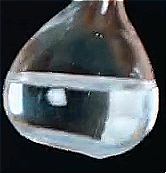Undecane is an aliphatic hydrocarbon, an alkane with eleven carbon atoms.
The name defines the structure of the molecule
- "Undec-". This prefix is derived from Latin and indicates the number eleven.
- "ane". This ending indicates that the molecule is an alkane, which is a saturated hydrocarbon, meaning it contains only single bonds between carbon atoms.
Description of raw materials used in production
- Petroleum - Crude oil contains a variety of alkanes, including undecane.
Step-by-step summary of industrial chemical synthesis process.
- Fractional Distillation - Crude oil undergoes fractional distillation to separate its different components based on boiling points.
- Isolation - After distillation, fractions containing undecane are separated.
- Purification - Impurities are removed from undecane through further distillation processes or treatments like hydro-treating.
- Quality Control - A quality check is done on the undecane to ensure it meets the desired specifications.
It occurs as a colorless liquid, insoluble in water and less dense than water.

What it is for and where
Cosmetics
Skin conditioning agent - Emollient. Emollients have the characteristic of enhancing the skin barrier through a source of exogenous lipids that adhere to the skin, improving barrier properties by filling gaps in intercorneocyte clusters to improve hydration while protecting against inflammation. In practice, they have the ability to create a barrier that prevents transepidermal water loss. Emollients are described as degreasing or refreshing additives that improve the lipid content of the upper layers of the skin by preventing degreasing and drying of the skin. The problem with emollients is that many have a strong lipophilic character and are identified as occlusive ingredients; they are oily and fatty materials that remain on the skin surface and reduce transepidermal water loss. In cosmetics, emollients and moisturisers are often considered synonymous with humectants and occlusives.
Skin conditioning agent. It is the mainstay of topical skin treatment as it has the function of restoring, increasing or improving skin tolerance to external factors, including melanocyte tolerance. The most important function of the conditioning agent is to prevent skin dehydration, but the subject is rather complex and involves emollients and humectants that can be added in the formulation.
Commercial applications
Solvent. Used in industrial applications to dissolve various materials.
Fuel Component. Can be found in hydrocarbon mixtures used as fuels.
Perfumes and Fragrances. Sometimes used as a component in perfume formulations due to its volatility.
Cosmetics. Can be utilized in cosmetics as an emollient or to adjust the product's viscosity.
Research. Can be used in a laboratory setting as a reference standard in chromatography or other analyses.
![]() Undecane
Undecane 


